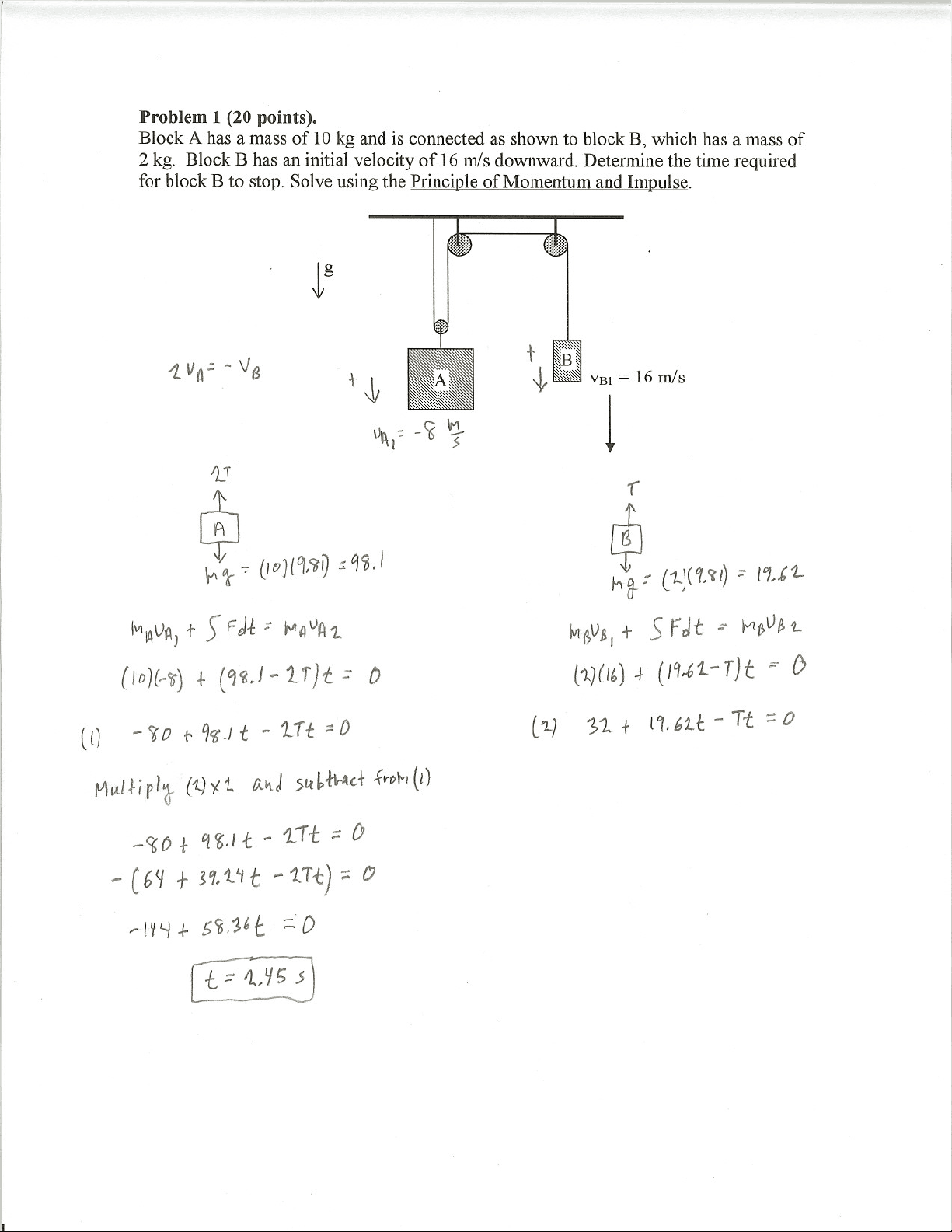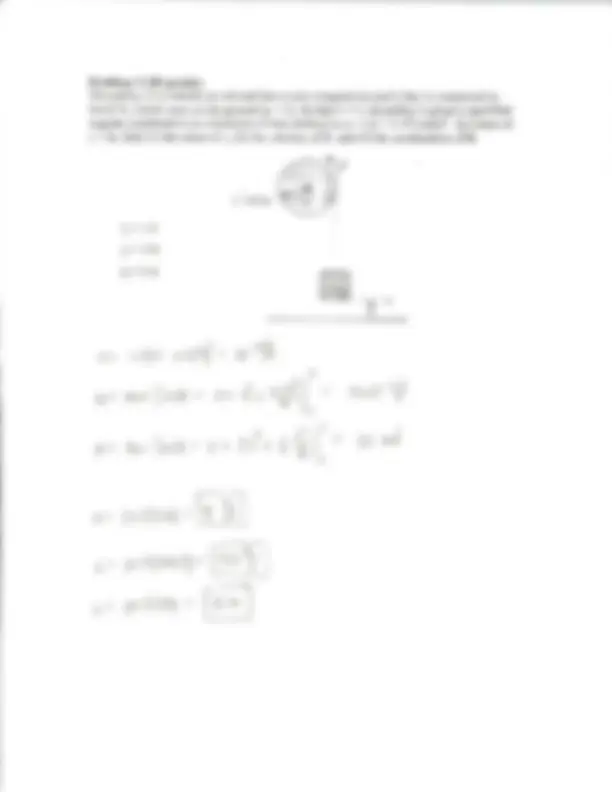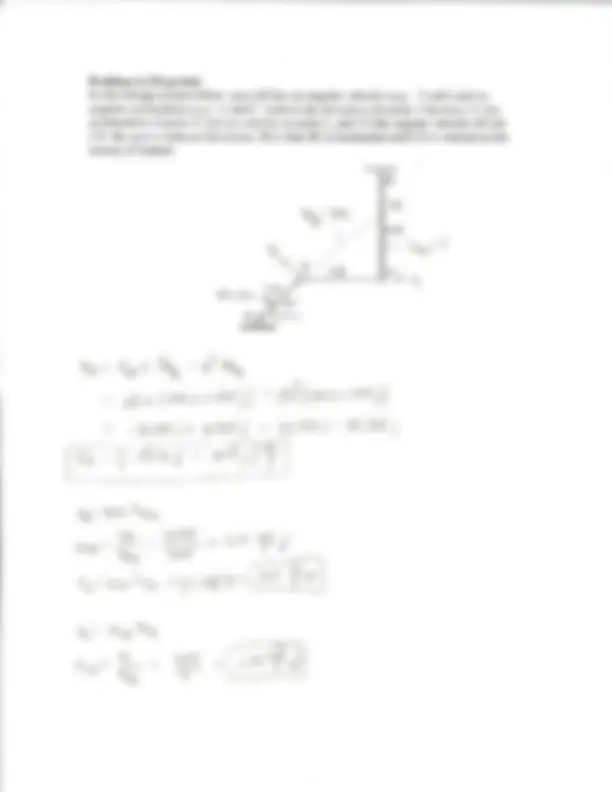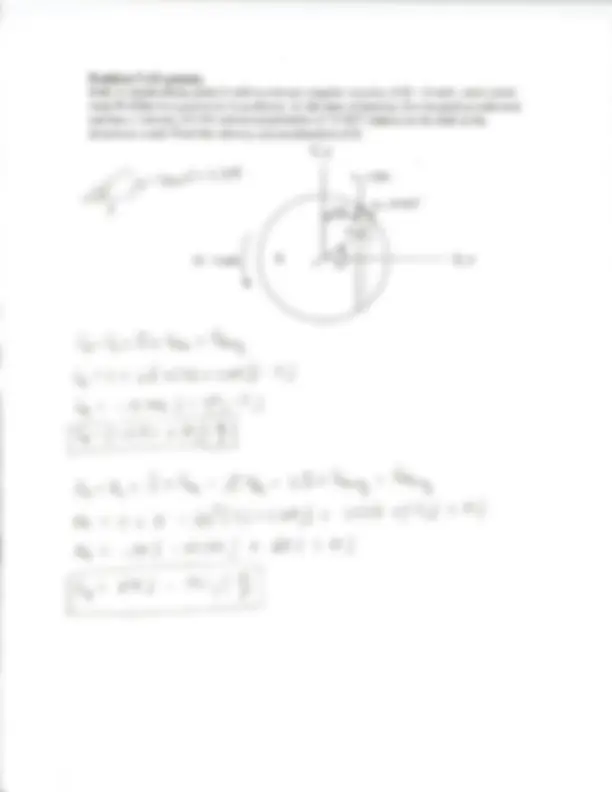





Study with the several resources on Docsity

Earn points by helping other students or get them with a premium plan


Prepare for your exams
Study with the several resources on Docsity

Earn points to download
Earn points by helping other students or get them with a premium plan
Community
Ask the community for help and clear up your study doubts
Discover the best universities in your country according to Docsity users
Free resources
Download our free guides on studying techniques, anxiety management strategies, and thesis advice from Docsity tutors
Material Type: Exam; Class: Enginering Mechanics-Dynamics; Subject: Engineering; University: Southern Polytechnic State University; Term: Fall 2008;
Typology: Exams
1 / 5

This page cannot be seen from the preview
Don't miss anything!




1 Block A has a mass of 10 kg and is connected as shown to block B, which has a mass of 2 kg. Block B has an initial velocity of 16 m/s downward. Determine the time required for block B to stop. Solve using the Principle of Momentum and Impulse. I.
l() -~ 0 r 99)'./ t - 11 t ;: D (J().lfip''d- (1.J'/.t fA",-J 51.f~*4cJfrt>M(I)
- C 6 ~ + 3', 1..~ t - 1.:r-t) :: (J
~ I~Y.j- S~.>' t ~ D ~ ~,~~~ 1" ~
~r>V$1 + S FJt ~ ~t>tJ~1.. ("k) ( Ib) ..J- (I q,~1.. - T) t ;;.-() L '1-) '], '1 + t 1.{,it - T t :: 0
Two smooth disks are moving with the velocities shown and then collide. The masses for disks A and Bare 4 kg and 10 kg, respectively. If the coefficient of restitution is e = 0.8, determine the velocities of both disks after the impact (magnitude and direction).
1....~;:I)A(I (^) +- i"t~U~)(11- ~^ A^ V ~)(::^ -t^ 1v113'v^ ($ ')(
...
I I (^) uu 1..\y1> I •
I I B pact II II II I
e:::D.~= ~ UA..,c) - [/8')(' I
5 - (-1)
5.' = V~y.._ V ()(1.-
D -:: Y VA'IlL+ / D (S,b -l- V!41C'l)
vA{1-. -:: - 'f ~
\J~y:;;; t Itk ~
r-- Problem 4 (20 points).
angular acceleration aAB = 6 rad/s2 , both in the directiol} indicated. Calculate (1) the acceleration of point B, (2) the velocity at point C, and (3) the angular velocity oflink CD. Be sure to indicate directions. Note that BC is horizontal and CD is vertical at the instant of interest.
_f _ /' I V& / ~ B,I'" 3ft )y. 2ft /
/
.- ,.... -- 1..- Ct~;:- c:::I.(4eX h>(t\ - W ~e,/A
-- -<6, ~~>;.f ~,~~~j - »)55; - »:;» j [Ci~ ---------- -Tn~_ Up>; W (1C \r 1>/':1: C
lYre 4,1.. L.J .> \J ~ = W tc ·'11L ,,( 1,>/)( J) "G,~7R
mass B slides in a groove in A as shown. At the time of interest, B is located as indicated and has a velocity of 5 ft/s and an acceleration of 10 ft/s2 relative to the disk in the directions noted. Find the velocity and acceleration ofB. Y,y
o
VBla 5 ft/s
x,x
~..--~^ -^ """"" V- 1)/3>:= V() t {Lv: 1re,11J f 6/P1C'J-
V ~ ;; D } 6 k "- ( z;.; + 'L 109 J) ~ 5 J
v(?,:: - 1'3,~5"' J + 1..~j - 5 j
~~ (-n,q.i + l"Ij)J
.